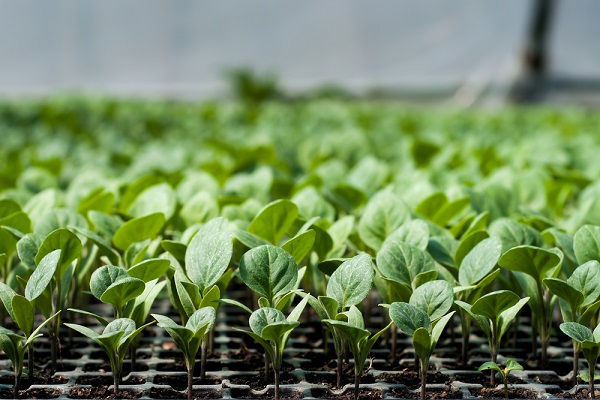Make a living by farming and selling seedlings. It is possible to make a living by selling seedlings in South Africa, but the success of your business will depend on a number of factors. These include the demand for your seedlings, the size of your operation, the cost of production, and the competition in your market.
To make a living selling seedlings in South Africa, you will need to have a steady supply of high-quality plants that are in demand. This may involve cultivating a variety of different plants to appeal to different customers and markets. You will also need to have a cost-effective method of production and distribution, as well as a reliable system for sales and marketing.
One potential advantage of selling seedlings is that they can be produced in smaller spaces, such as a greenhouse or small farm, which can reduce overhead costs. However, you will need to have a reliable source of water, as well as a means of controlling pests and diseases that can affect your plants.
Success in the seedling business also requires a good understanding of the market and the needs of your customers. This may involve attending trade shows and farmers’ markets, as well as building relationships with local nurseries and garden centers.
Overall, making a living by selling seedlings in South Africa is possible, but it requires careful planning, hard work, and a willingness to adapt to changing market conditions.
One advantage of selling seedlings is that there is usually a steady demand for them, particularly from gardeners, landscapers, and farmers. Additionally, there may be a growing interest in sustainable living, organic gardening, and locally sourced plants, which could further increase the demand for seedlings.
However, there are also potential challenges to consider. For example, selling seedlings may require a significant upfront investment in equipment, materials, and labor to grow and maintain the plants. You’ll also need to find ways to differentiate your seedlings from those of your competitors, perhaps by offering a unique selection, high-quality plants, or excellent customer service.

Overall, selling seedlings can be a good business if you can identify a demand for your product, differentiate yourself from competitors, and provide high-quality plants. It may also be helpful to conduct market research, develop a business plan, and seek advice from other successful plant sellers.
Wat Plants can you make selling for money?
There are several types of plants that you can consider selling for profit, depending on your market, location, and expertise. Here are some examples:
- Herbs: Culinary and medicinal herbs, such as basil, mint, and lavender, are popular with home gardeners and chefs. You can sell these plants as seeds, seedlings, or mature plants, and they can be grown in small spaces or in hydroponic systems.
- Vegetables: Many people are interested in growing their own vegetables, particularly organic and heirloom varieties. You can sell seedlings or mature plants of popular vegetables, such as tomatoes, peppers, and cucumbers, or niche vegetables like microgreens and specialty greens.
- Succulents: These plants have become trendy in recent years, and their low-maintenance nature makes them attractive to buyers. You can sell succulents as potted plants or as cuttings for people to grow their own.
- Native plants: There is often a demand for plants that are native to a specific area, particularly for ecological restoration and landscaping projects. You can sell seedlings or mature plants of native trees, shrubs, and wildflowers.
- Ornamental plants: Some ornamental plants, such as orchids, bonsai, and rare tropical plants, can be sold for a high price to collectors and enthusiasts.
These are just a few examples of plants that can be profitable to sell, but it’s important to do market research and consider factors such as local climate, growing conditions, and consumer demand in order to determine the best plants to grow and sell for your specific business.
What are the best selling plants in South Africa?
The best selling plants in South Africa may vary depending on the region, season, and market demand, but here are some popular plants that are commonly sold:
- Succulents: These water-wise plants are popular in South Africa due to their low maintenance requirements and unique shapes and textures. They can be sold as potted plants or as cuttings for propagation.
- Indigenous plants: South Africa has a diverse range of indigenous plants, many of which are well-suited to the local climate and conditions. These plants are often used in landscaping and ecological restoration projects, and can include trees, shrubs, and wildflowers.
- Aloe vera: Aloe vera is a popular medicinal plant in South Africa, known for its soothing properties for burns and skin irritations. It is also used in cosmetics and other products, and can be sold as a potted plant or as cuttings for propagation.
- Proteas: Proteas are a type of flowering plant that are native to South Africa and are a popular export product. They are known for their unique shapes and colors and are often used in floral arrangements.
- Fruit trees: Fruit trees such as avocado, citrus, and mango are popular in South Africa, and can be sold as seedlings or mature trees.
- Cycads: These ancient plants are popular among collectors and enthusiasts, and can be sold for a high price due to their slow growth and unique appearance.
These are just a few examples of the best selling plants in South Africa, and there may be many other types of plants that are in high demand depending on the market and region.

Places you can sell your seedlings
When farming with seedlings, there are several options for selling your plants. Here are a few ideas to consider:
- Local farmers’ markets: Many farmers’ markets offer a space for vendors to sell plants, including seedlings. This can be a good option if you have a small-scale operation and want to sell directly to consumers.
- Garden centers and nurseries: Garden centers and nurseries often purchase seedlings from local growers to sell in their stores. This can be a good option if you are able to produce high volumes of seedlings and have established relationships with local retailers.
- Online marketplaces: There are several online marketplaces where you can sell your seedlings, including Etsy, Facebook and other online social websites. You can also consider setting up your own website to sell your plants directly to customers.
- Local landscaping and gardening companies: Landscaping and gardening companies often purchase plants in bulk for their projects. If you can produce high volumes of seedlings, you may be able to establish a relationship with a local company and sell to them directly.
- Local farms: If you are growing vegetable or fruit seedlings, you may be able to sell them to local farms for transplanting in their fields.
It’s important to research and identify potential buyers in your area, as well as the demand for specific types of seedlings. You can also consider joining local gardening or farming groups to connect with other growers and potential customers.
How much space do you require to start farming with seedlings
The amount of space required to start farming with seedlings will depend on several factors, including the number and type of seedlings you plan to grow, the equipment and infrastructure you need, and the growing method you choose. Here are a few things to consider:
- Type of seedlings: The space required to grow seedlings will vary depending on the type of plants you choose. For example, microgreens can be grown in trays indoors and require only a few square feet of space, while vegetable seedlings will require more space and may need to be grown outdoors or in a greenhouse.
- Equipment and infrastructure: Depending on your setup, you may need to invest in equipment such as trays, irrigation systems, and lighting. You will also need to have a covered space to protect your seedlings from the elements and to control temperature and humidity levels.
- Growing method: The growing method you choose will also impact the space required for your operation. Hydroponic systems, for example, can be set up vertically and require less space than traditional soil-based growing methods.
As a general rule of thumb, you can expect to require at least a 10 square meters of space to start farming with seedlings. This will allow you to produce a significant number of plants and to have room to expand your operation as needed. However, the actual space required will depend on your specific needs and circumstances. It’s important to do a detailed analysis of your business plan and growing methods to determine how much space you will need to start farming with seedlings.
If you enjoyed our post “Make a living by selling seedlings” pease consider subscribing to our website to get more post’s like these.
YouTube Channel: Farming South Africa
Facebook Page: Farming Life
Back To Home Page: Farming South Africa
Make a living by selling seedlings

